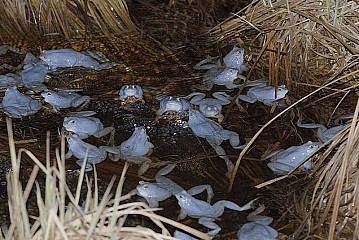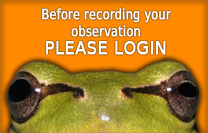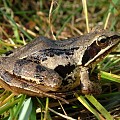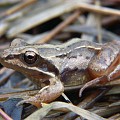
Body length of the MOOR FROG is 6.5–8 cm. Its back is brownish, often with a light central longitudinal stripe with darker margins. Its sides can also have some lighter colouration with sharp edges. Along the border of the belly and the sides the species often have a characteristic row of black patches, which begins in front of the base of the forelimbs. The hind limbs have darker transversal stripes. Its belly has light colouration. In the breeding season the head, the back and sometimes the whole dorsal surface of the males become bright turquoise.
Distibution map by our National Herpetological Mapping Program:




















